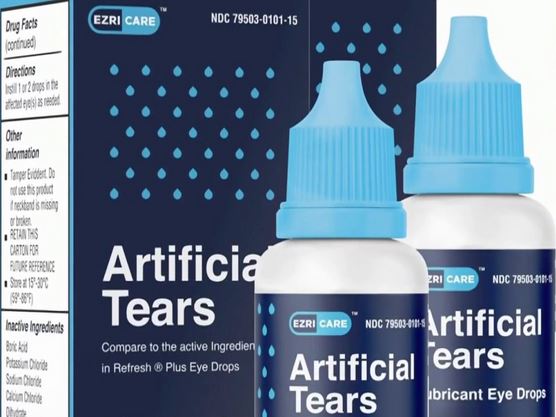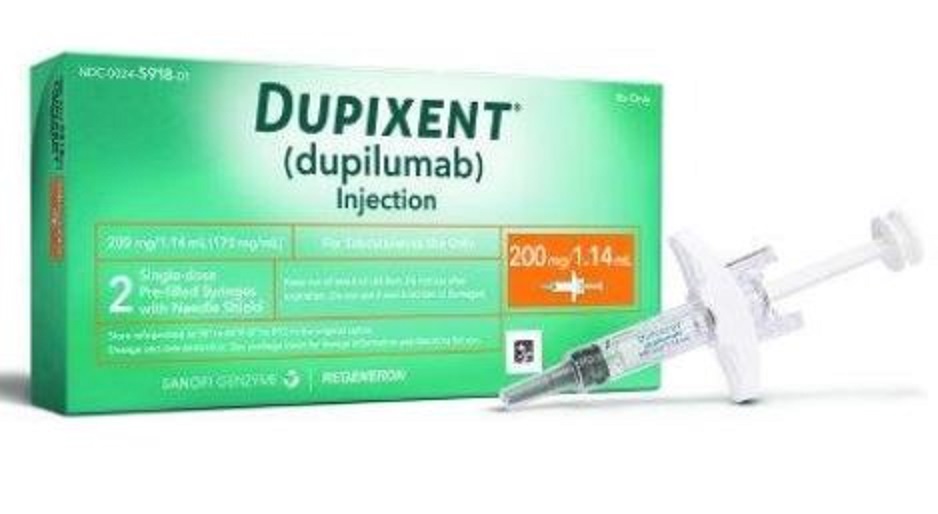EzriCare Eye Drops Pose Serious Health Risk Including Death Featured
EzriCare artificial tears drops have recently been linked to a series of serious bacterial infections that have caused vision damage and even death.

Individuals who suffered vision loss or other serious heath consequence from a bacterial infection related to artificial tear drops could be entitled to significant financial compensation.
EzriCare Artificial Tear Drops
EzriCare is a company based in Lakewood, New Jersey, that makes a small line of personal care products. EzriCare’s Artificial Tears Lubricant Eye Drops is an over-the-counter eye drop product sold at Walmart, Amazon, and other major retailers nationwide.
The EzriCare Artificial Tears come in a small 15 ml bottle. The drop solution uses an active ingredient called carboxymethylcellulose sodium which is found in many other eye drops. Carboxymethylcellulose sodium mimics the effect of actual tears and helps moisten and soothe dry eyes. EzriCare artificial tears and other similar products have been around for years.
Although the Artificial Tears Drops are sold under the EzriCare brand, they are not manufactured by EzriCare. The Artificial Tears drops were formulated and designed by Aru Pharma Inc., and the product is manufactured in India by Global Pharma Healthcare PVT LTD.
EzriCare Artificial Tear Drops Linked To Serious Bacterial Infections
In January 2023, the Centers for Disease Control (CDC) began investigating a sudden series of over 50 bacterial infections in 12 different states that appeared to be related to the use of over-the-counter eye drop products. The reports from the CDC included infections of the cornea, intraocular fluids, respiratory tract, and urinary tract infections.
Through its investigation process, the CDC determined that the source of these infections appeared to be the EzriCare Artificial Tears product. The CDC performed chemical analysis testing on previously opened bottles of EzriCare drops and quickly identified that they contained a bacteria called Pseudomonas aeruginosa.
Pseudomonas aeruginosa is commonly found in damp environments such as soil and water. Pseudomonas aeruginosa bacteria frequently cause infections in humans, most commonly in the lungs, blood, or other areas inside the body. What makes Pseudomonas aeruginosa particularly dangerous is that the bacteria constantly evolve to develop antibiotic resistance.
The current outbreak of the Pseudomonas aeruginosa bacteria resulting from the use of the EzriCare and/or Delsam Pharma Artificial Tears began in May 2022 and has been linked to 12 states, so far: California, New York, Florida, Texas, Colorado, Connecticut,New Jersey, New Mexico, Nevada, Utah, Washington, and Wisconsin. The CDC has isolated the specific strain of Pseudomonas aeruginosa and identified it as Verona Integron-mediated Metallo-β-lactamase (VIM) and Guiana-Extended Spectrum-β-Lactamase (GES)-producing carbapenem-resistant Pseudomonas aeruginosa (“VIM-GES-CRPA”). This is a particular strand or a particularly dangerous bacteria.
Infections From Eye Drops Cause Serious Injuries Or Death
The bacteria infections linked to the contamination of EzriCare Artificial Tears eye drops have been severe. The Pseudomonas aeruginosa found in the EzriCare artificial tears drops is highly resistant to most antibiotics, making it very difficult to treat.
Individuals who used the contaminated eye drops have developed severe infections in the cornea and intraocular fluids. These infections have resulted in permanent vision loss or vision impairment. The bacteria in the Ezricare eye drops has caused other individuals to develop urinary and respiratory tract infections. There was at least one case where the infection caused by the eye drops progressed to sepsis (an infection of the bloodstream) which caused death.
How Did The Eye Drops Become Contaminated?
It is unclear how the EzriCare Artificial Tears eye drops became contaminated with Pseudomonas aeruginosa. The CDC performed laboratory testing on previously opened EzriCare drops bottles from various production lots. Some bottles came from reported infection victims, and others were obtained from non-infected consumers.
The testing of these bottles confirmed the presence of the Pseudomonas aeruginosa bacteria in the eye drops. Advanced analysis of the bacteria strain found in the EzriCare bottles was performed, and the bacteria strain in the bottles matched the bacteria strain detected in victims of the outbreak. This evidence conclusively established the EzriCare eye drops as the source of the infections.
All eye drop products, including the EzriCare Artificial Tears eye drops, are preservative-free, giving this bacteria room to run.
EzriCare Eye Drops Infection Lawsuits
Although the exact nature and cause of the bacteria contamination in the EzriCare eye drops is still being investigated, EzriCare will be liable for injuries caused by the contaminated eye drops. In the U.S., tort law holds product manufacturers and retailers strictly liable for injuries caused by manufacturing defects in their products. This means that negligence is not necessarily required.
EzriCare will have direct liability for all injuries linked to infections caused by contaminated EzriCare eye drops. The EzriCare Artificial Tears product was sold at major retailers such as Walmart. This means that Walmart and other retailers where the product was sold will also have liability for injuries caused by the eye drops.
Settlement Value Of Contaminated Eye Drops Lawsuit
The settlement compensation of product liability lawsuits involving injuries caused by contaminated EzriCare eye drops will depend primarily on the nature and extent of the injuries caused by the infection. Based on the reports on infections provided by the CDC, some of the injuries caused by the contaminated eye drops have been very serious. At least one person has died, and many more have been hospitalized. The CDC report indicates that those with eye infections may have suffered permanent vision loss or impairment.









